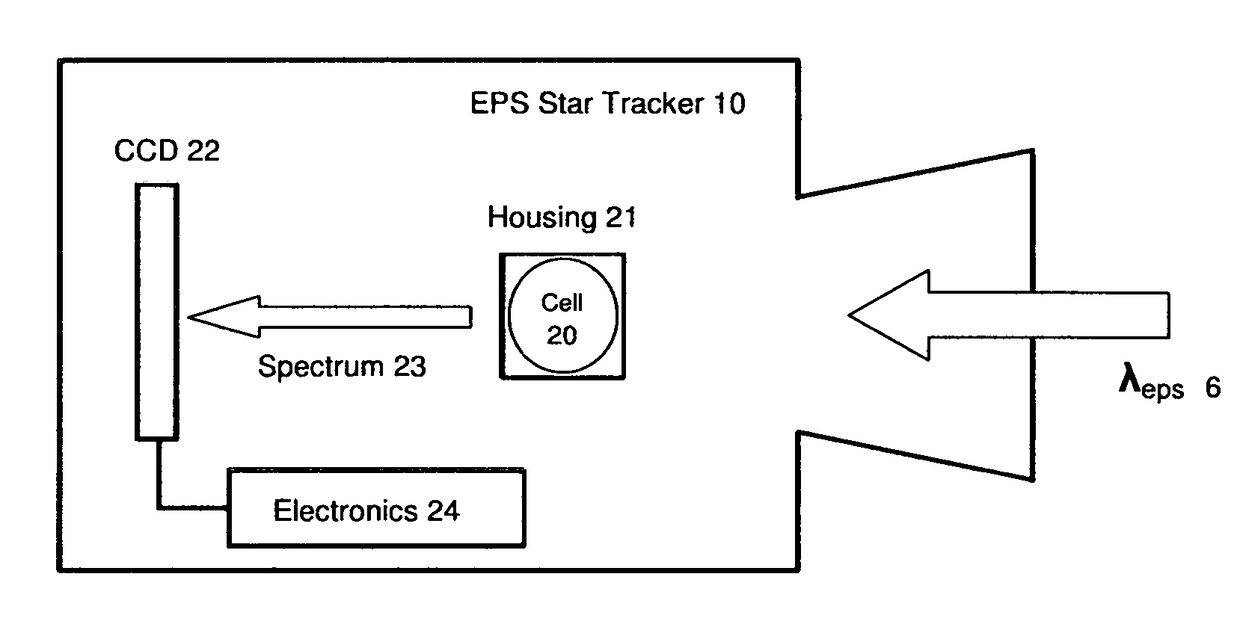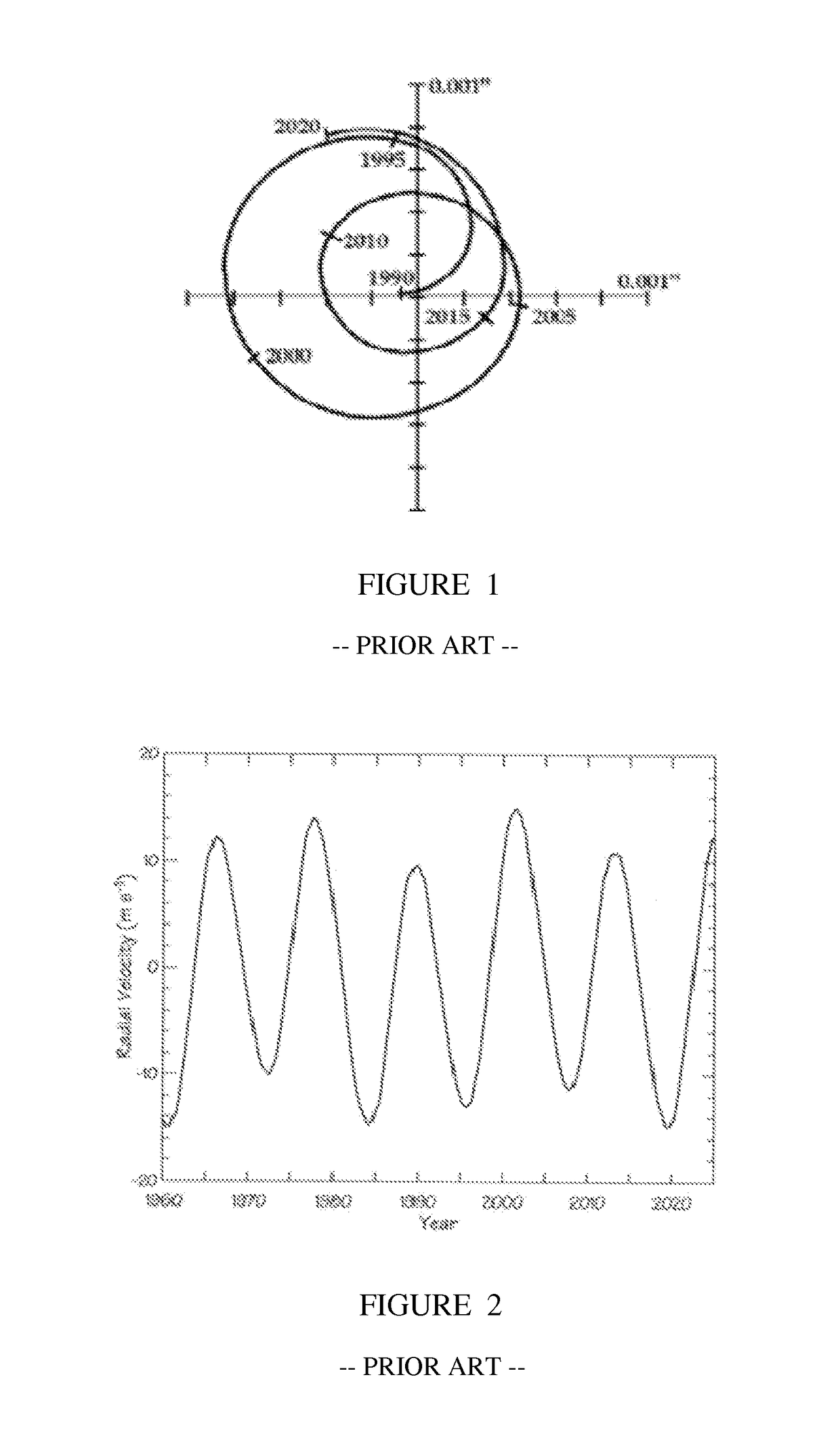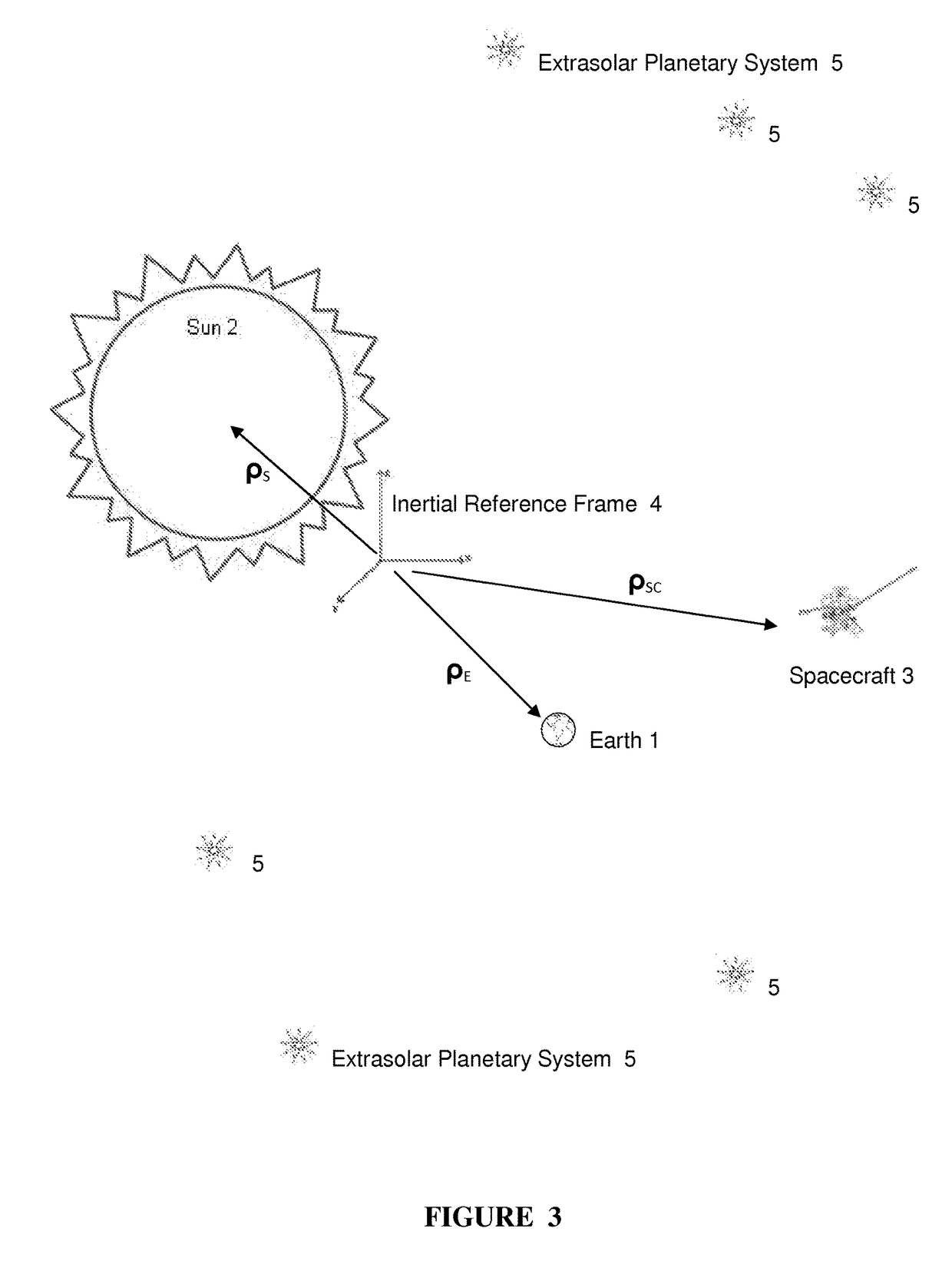Apparatus and system for spacecraft celestial navigation using spectral observations of extrasolar planetary systems
a technology of celestial navigation and satellites, applied in the field of satellites and systems for spacecraft celestial navigation using spectral observations of extrasolar planetary systems, can solve the problems of limited dsn resources, limited use of gps satellites orbiting the earth for deep space missions, and dsn accuracy degradation, so as to reduce the requirements and resources of dsn tracking, stable, and highly predictable natural signal patterns
- Summary
- Abstract
- Description
- Claims
- Application Information
AI Technical Summary
Benefits of technology
Problems solved by technology
Method used
Image
Examples
Embodiment Construction
[0025]Nay State determination through the use of extrasolar planetary system motion data is an innovative method for onboard spacecraft navigation. It will significantly enable and enhance mission capabilities for future manned and unmanned space vehicles as well as reducing the need for Deep Space Navigation resources. Over 700 extrasolar planets have been discovered around nearby main sequence stars within the past 15 years. The motion of these extrasolar planets around their stellar barycenters provides a stable, highly predictable natural signal pattern. Observations from these star systems allow for enhanced spacecraft self determination of orbits and position as well as navigation.
Extrasolar Planetary System Motion and Measurements
[0026]Earth based exoplanet searches have sought to identify planetary systems by observing characteristics of the parent star about which the potential planet is orbiting. The main methodologies employed for such exoplanet detection have been astrom...
PUM
 Login to View More
Login to View More Abstract
Description
Claims
Application Information
 Login to View More
Login to View More - R&D
- Intellectual Property
- Life Sciences
- Materials
- Tech Scout
- Unparalleled Data Quality
- Higher Quality Content
- 60% Fewer Hallucinations
Browse by: Latest US Patents, China's latest patents, Technical Efficacy Thesaurus, Application Domain, Technology Topic, Popular Technical Reports.
© 2025 PatSnap. All rights reserved.Legal|Privacy policy|Modern Slavery Act Transparency Statement|Sitemap|About US| Contact US: help@patsnap.com



